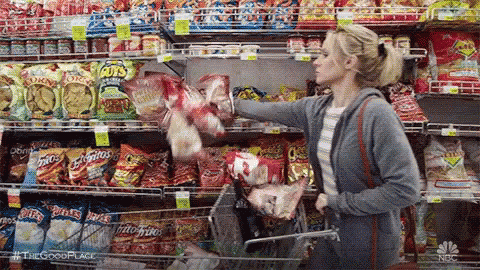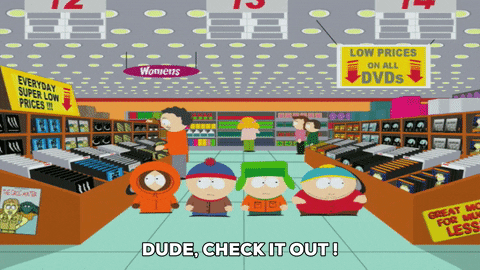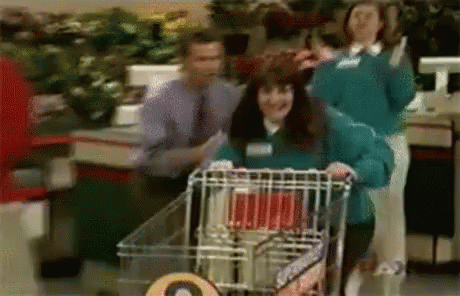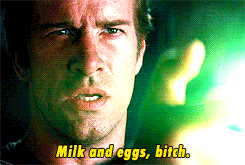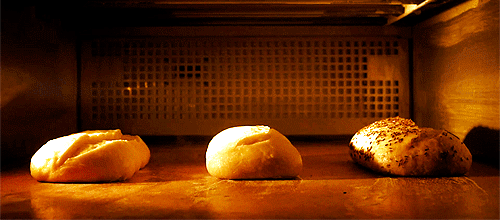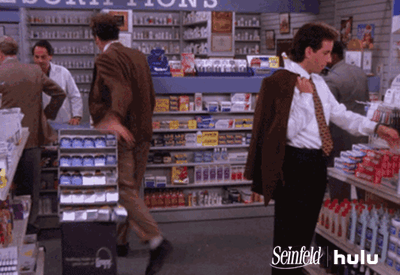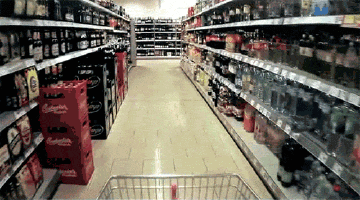Confusing Placement
This one is fairly simple. While certain associated items are sort of close to each other, plenty of products you’d think would be right next to each other rarely are.
Simply put, it’s so you have to walk through more aisles. In a report from the Marketing Science Institute, it found 68% of customers that walked through more aisles made impulse buys they weren’t planning on.
The “Left Digit Effect”
I’m sure you’ve noticed the odd phenomenon of every price ending in “.99” instead of “.00.”
It’s a combination of two things. One, “charm pricing,” where discounting an item literally by a penny gives the impression of savings. But on top of that is the “Left-Digit Effect.” If you’re looking at an item priced at $4.99 vs. $5.00, the left-most digit is obviously the one you’re paying attention to. What gets interesting about the left-digit effect is that we don’t tend to see notice the last two digits.
For example, if you see something priced $5.49 vs. $5.50, it doesn’t register as much of a difference in savings. But, in $4.99 vs $5.00, the left-most digit being one whole value lower seems like a bigger deal. In both scenarios, there’s only a difference of a single cent, but our brains tend to see that first number and immediately respond, which is why discounts are often designed to bring the left-most digit down a whole number.
Eye Level
Stores know what you want, and the items they know are in-demand the most are placed at roughly your eye level. But in a slightly more sinister move, lower-priced items of the same type placed lower, so you’re less likely to bend down and grab them.
Oh, and don’t you worry, stores didn’t forget about kids. Items that are desired by children are placed at their eye level, so they can talk you into buying that f@#king cereal they saw on TV.
Shopping Cart Size
The logic of making shopping carts bigger is pretty simple: More space to shove stuff, customers will buy more. But it’s backed up by a study: Double a shopping cart’s size, customers buy 40% more than they normally did.
Relaxing Music
Now, “relaxing” music doesn’t necessarily lead to big sales (otherwise, Yanni’s music would be in every store in the world). Relaxing music simply refers to music with a slower beat, and people will subconsciously match the beat of music while walking around a store. Supermarkets in particular use this trick, playing all sorts of music from different genres and timeframes, but always with a slower beat.
Where’s the Dairy?
You ever notice that dairy products and eggs are almost never at the front of a supermarket?
Similar to the idea of placing associated items away from each other, milk, eggs, and dairy, in general, is the most popular items in a supermarket because of how essential they are to basic cooking. So, they are placed as far away from the entrances as possible so that you have to walk through several aisles to find them, “hopefully” buying some other items along the way.
Smells
This one is pretty simple: If you walk buy a bakery, and it smells good, you can’t help but take a look at what they’re selling. Good smells can equal a purchase. This is one of the reasons why fruits and vegetables are placed at the front of a store. Between the smells they produce, and the (generally) bright colors, it’s a solid way to generate some impulse buys as soon as you walk in the door.
Narrow Aisles
Okay, this s@#t is straight-up evil.
There is no way to go to a store and not experience the awkwardness of trying to maneuver around a shopping cart around someone else’s cart as they’re coming down the aisle. Why the hell are the aisles so narrow? So you’re forced to slow down, which potentially leads to you seeing more items, which might lead to another purchase.
And if that wasn’t enough, this is why checkout aisles are so narrow. If you’re stuck staring at some Orbit Gum you’re thinking about buying, it’s hard to get that thought out of your head as you’re stuck in a narrow space.
Small Tiles
And here’s the weirdest trick by far. In sections of a store with expensive items, you might notice that the tiles are smaller.
The reason for this is just bizarre. Because the tiles are smaller, there are more edges for your shopping cart wheel to hit. That generates more noise. Since people don’t want to generate more noise, they might slow down and look at the expensive items for longer, and you just might buy something extra (and expensive).

